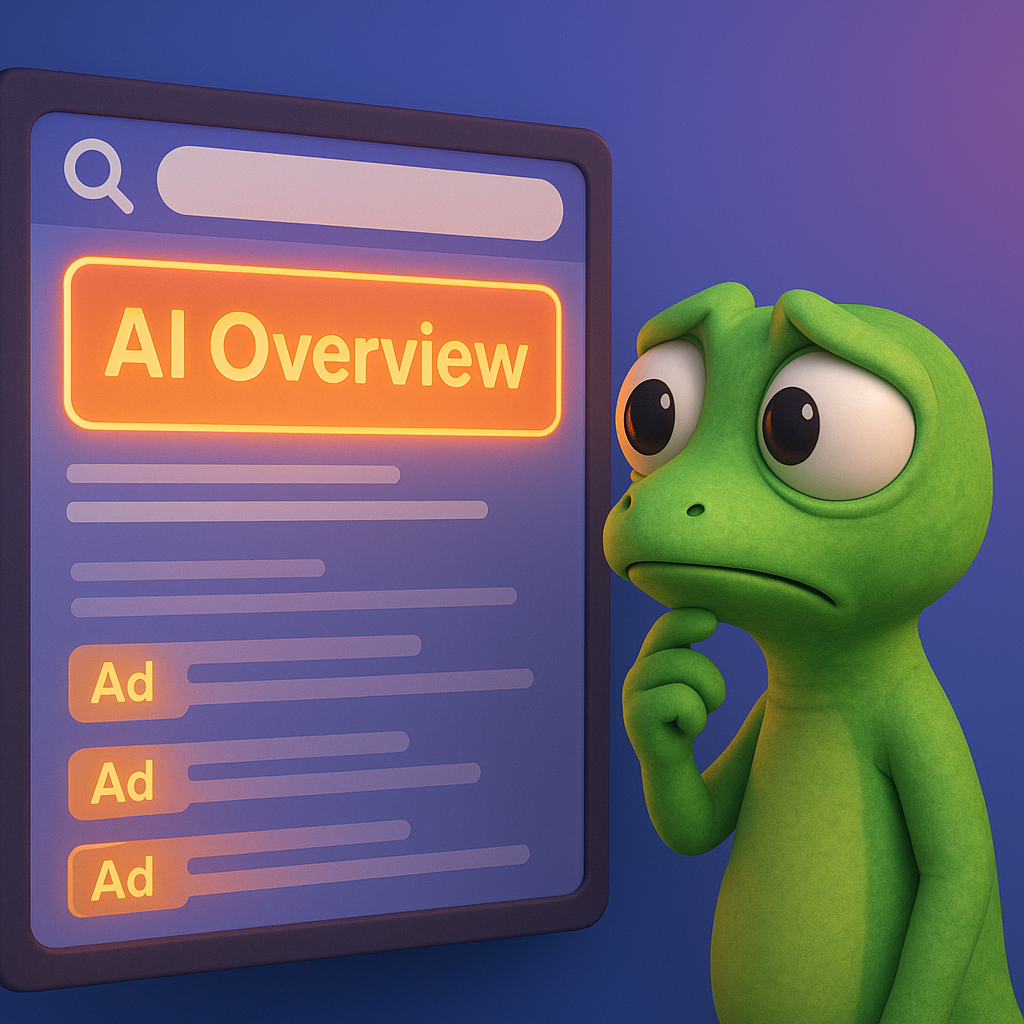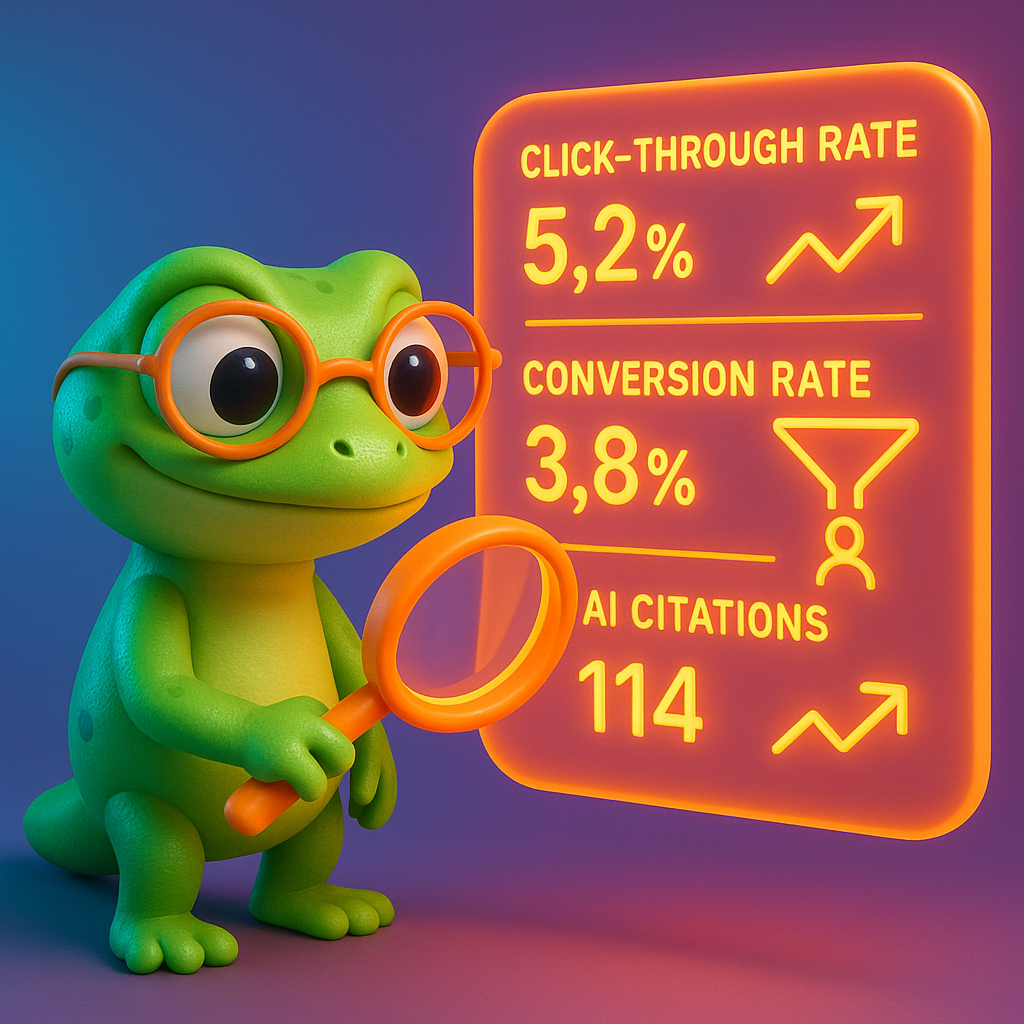How LLMs Impact Paid Search Campaigns: A Marketing Leader's Guide
In the rapidly evolving digital landscape, large language models (LLMs) are fundamentally transforming paid search campaigns. With AI Overviews dominating search engine results pages (SERPs) and pushing ads lower, marketing leaders face both challenges and opportunities to maintain advertising effectiveness.
The Transformation of Search Results Pages
LLMs have introduced significant changes to how search results are presented, directly affecting paid search campaign performance:
AI Overviews Dominate the SERP
- AI-generated summaries now appear at the top of search results, pushing paid ads lower on the page
- Reduced ad visibility leads to measurable decreases in click-through rates (CTRs)
- Seer Interactive reports that this placement shift significantly impacts ad performance metrics

Search Intent Interpretation Is More Nuanced
- LLMs understand context and user intent with greater sophistication
- Paid search campaigns must align with more complex intent signals
- Keyword targeting strategies need refinement to match LLM-powered search capabilities
The shift is so significant that according to recent projections, LLM search traffic could drive 75% of revenue by 2028, surpassing traditional search methods. This represents a fundamental change in how users discover and interact with digital content.
Key Performance Metrics Affected by LLMs
Marketing leaders should be aware of how LLMs affect core paid search metrics:
Click-Through Rate (CTR) Changes
- Ads placed below AI Overviews experience reduced visibility and engagement
- Users may find answers directly in AI summaries without needing to click on ads
- Campaign performance benchmarks need adjustment to account for these new realities
This shift resembles what happened when featured snippets were introduced, but with even greater impact. When users receive comprehensive answers in AI Overviews, the incentive to click through to ads diminishes significantly.
Cost-Per-Click (CPC) Adjustments
- Budget allocation is shifting toward high-intent keywords as low-intent traffic diminishes
- Competition for high-converting keywords increases, potentially driving up costs
- Marketers must reevaluate bidding strategies in response to changing user behavior
For example, informational queries like “how to fix a leaky faucet” might now be fully addressed by AI summaries, while transaction-oriented searches like “buy Delta kitchen faucet” still drive clicks to ads.
Conversion Focus
- The emphasis moves from click-based metrics to conversion optimization
- Quality of traffic becomes more important than quantity
- Campaign success metrics require recalibration to focus on bottom-line impact
This shift actually benefits sophisticated marketers who have always prioritized conversions over vanity metrics. The ROI of LLM optimization increasingly depends on capturing high-intent traffic that leads to actual business results.
Optimization Strategies for the LLM Era
To maintain and improve paid search performance, consider these strategies:
Leverage Platform-Specific AI Tools
- Utilize Google’s Performance Max campaigns and Smart Bidding to adapt to AI Overviews
- Microsoft Advertising’s integration with Copilot offers improved query interpretation
- These platform-native tools are designed specifically to work within the new AI-enhanced search environment
Smart marketers are embracing these tools rather than fighting against them. For instance, Performance Max campaigns use machine learning to optimize ad placements and bidding across Google’s entire ecosystem, helping compensate for reduced visibility in traditional search placements.
Keyword Strategy Shifts
- Prioritize high-intent keywords (e.g., “buy,” “price”) over informational queries
- Focus on terms less likely to be fully addressed by AI summaries
- Use free keyword clustering tools to identify semantic relationships that LLMs recognize
The semantic understanding of LLMs means simple keyword matching is no longer sufficient. Instead, marketers need to understand the conceptual relationships between terms and how they signal different types of intent.
Ad Copy Personalization
- Highlight unique offers or services that AI summaries cannot replicate
- Emphasize exclusive benefits and time-sensitive promotions
- Create ad content that complements rather than competes with AI-generated information
Effective ad copy now needs to answer the “why us?” question more convincingly than ever. Generic value propositions fall flat when AI can already summarize general information about products and services.
Build Brand Authority
- Strengthen brand presence to increase chances of being featured in AI Overviews
- Develop content that positions your brand as an authoritative source
- This approach supports both traditional SEO and LLMO techniques simultaneously
Brands that establish themselves as authoritative sources are more likely to be cited in AI-generated summaries, creating a virtuous cycle of visibility across both paid and organic channels.
Measuring Success in the LLM Era
New metrics are emerging to evaluate paid search effectiveness:
AI Citations and Mentions
- Track when your brand or content is referenced in AI-generated summaries
- Measure the frequency and context of these mentions
- Consider using specialized tools for monitoring LLMO performance to track this data
These citations represent a new form of digital equity that can drive brand awareness even when users don’t click through to your site. Being mentioned in AI Overviews can influence future search behavior and purchase decisions.

Cross-Channel Attribution
- Evaluate how paid search interacts with organic LLM search visibility
- Develop attribution models that account for AI-influenced customer journeys
- Measure the holistic impact across different touchpoints in the customer experience
The lines between paid and organic are blurring in the LLM era. A comprehensive attribution model needs to consider how exposure in AI summaries might influence later direct searches or paid ad clicks.
Platform-Specific Performance
- Segment performance data by search platform (Google’s AI Mode, Microsoft Copilot, etc.)
- Identify where your paid campaigns perform best in AI-enhanced environments
- Adjust budget allocation based on platform-specific results
Different platforms implement LLM features in various ways, affecting ad visibility and performance differently. Smart marketers are tracking these variations and adjusting their platform mix accordingly.
Real-World Impact and Market Growth
The influence of LLMs on paid search is backed by significant market data:
- The U.S. LLM-powered tools market is projected to grow from $395.41 million in 2023 to $11.7 billion by 2032, at a CAGR of 45.74%, according to Credence Research
- User adoption is substantial, with 52% of U.S. adults now using LLMs like ChatGPT, Gemini, Claude, and Copilot
- This represents one of the fastest technology adoption rates in history, according to Elon University’s Imagining the Digital Future Center
The rapid adoption means marketers can’t afford to take a wait-and-see approach. The shift is happening now, and early adapters will gain competitive advantages.
Preparing for Future Developments
As LLM technology continues to evolve, marketing leaders should:
Stay Informed About Platform Changes
- Monitor Google’s AI Overviews and Microsoft’s Copilot developments
- Anticipate how these changes might affect ad placement and effectiveness
- Be prepared to quickly adapt strategies as search interfaces evolve
The rate of change in search interfaces is accelerating. What works today may not work six months from now, making agility and continuous learning essential skills for paid search marketers.
Explore Generative Engine Optimization (GEO)
- Invest in optimizing content for AI-driven summaries and responses
- This emerging strategy complements traditional paid search approaches
- Consider how your paid and organic strategies can work together in this new environment
GEO represents the next frontier in digital marketing—optimizing not just for human readers or traditional search algorithms, but for the generative AI systems that increasingly mediate information discovery.
Test and Learn Continuously
- Implement A/B testing to determine what works best in LLM-influenced search
- Gather data on which ad formats and messaging resonate in the new environment
- Use website content generation tools that are optimized for both human readers and AI systems
The only constant in the LLM era is change. Successful marketers are adopting a test-and-learn mindset, quickly identifying what works and scaling those approaches while moving away from tactics that no longer deliver results.
TL;DR
LLMs are fundamentally changing paid search by pushing ads below AI-generated summaries, requiring marketers to adapt their strategies. Key adjustments include focusing on high-intent keywords, personalizing ad copy to offer unique value, leveraging platform-specific AI tools, and measuring new metrics like AI citations. With the U.S. LLM market projected to reach $11.7 billion by 2032 and 52% of adults already using these technologies, marketing leaders must prepare for a future where LLM search drives the majority of revenue. Success requires continuous testing, staying informed about platform changes, and developing strategies that work specifically within AI-enhanced search environments.
